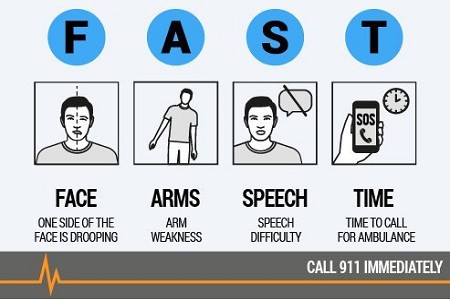~by Andrew Pacholyk, MS, L.Ac.
Peacefulmind.com
Stroke is often referred to as a brain attack. It is considered the No. 1 cause of adult disability and the No. 3 cause of death in the United States. It striking more than 500,000 people every year. A stroke can happen at any age.
It is important to recognize stroke symptoms and act quickly. The effects of a stroke may include paralysis, poor memory and loss of speech.
Common stroke symptoms seen in both men and women:
-Sudden numbness or weakness of face, arm or leg (often on one side of the body)
-Sudden confusion, trouble speaking or understanding
-Sudden trouble seeing in one or both eyes
-Sudden trouble walking, dizziness, loss of balance or coordination
-Sudden severe headache with no known cause
Women may report unique stroke symptoms:
-Sudden face and limb pain
-Sudden hiccups
-Sudden nausea
-Sudden general weakness
-Sudden chest pain
-Sudden shortness of breath
-Sudden palpitations
The acronym F.A.S.T. is a good way to recommend the signs of a stroke.
FAST stands for:
F – Face: This tells you that if a person’s face is drooping around the eye or mouth, this could be a sign of a stroke. If a person’s face appears to be drooping and they are experiencing numbness, they could be having a stroke. Ask the person to smile. Does one side of the face droop?
A – Arm: This means you should check for arm weakness. A quick test is the inability to raise both arms over head. Ask the person to raise both arms. Does one arm drift downward?
S – Speech: Check for speech impairment, such as slurred speech or difficulty repeating simple phrases. Ask the person to repeat a simple sentence. Are the words slurred? Can they repeat the sentence correctly?
T – Test: This is a reminder that if you do suspect a stroke, use the FAST method and seek medical attention. If the person shows any of these symptoms, time is important.
Spotting a stroke in a timely manner could allow clot-busting medications to be administered and other treatments to begin. If symptoms are spotted within three hours of onset, these people might be eligible for clot-busting medication.
One of the problems with stroke symptoms is that many people ignore them. For some, it’s too late when they get to the hospital to do effective treatment options. People often think their symptoms are a big deal.
The first few minutes of a stroke are critical. Call 911, and seek attention right away.




